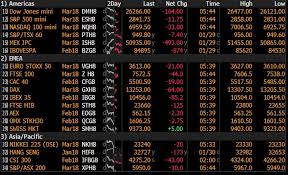Another Volatile Week for Stocks Leaves Wall Street Strategists Grappling with Forecasts

Stocks are being rocked by more volatility than investors have seen in a while—up one week, down the next. If the turbulence has left investors queasy, it’s also leaving market strategists scrambling to adjust their forecasts for the rest of 2018 as well as for 2019.
The upshot of those forecasts, as they stand right now: Most strategists feel the selloff of the past 10 weeks has left stocks undervalued. When stocks enter bear markets, they never do so in a straight line down, but with intermittent rallies along the way.
But they are divided over the outlook in 2019. Some see a year of recovery as the economy remains strong. Others are bracing for more declines as corporate earnings slow down.
The forecasts are coming as stock indexes faced another week of declines. The Dow Jones Industrial Average and the S&P 500 Index have erased, in the past three trading days, all the gains it scored in the previous six trading days. The S&P 500 closed Friday at 2,633.08, down 1.5% in the year to date. According to the Bespoke Investment Group, the fourth-quarter for U.S. stocks is off to its worst start since the great stock market meltdown of 2008.
Nonetheless, many market strategists are holding onto their somewhat bullish targets for the S&P 500 for the end of 2018. Back in September, those targets ranged between a then-bearish 2,750 (Morgan Stanley) and a very bullish 3,200 (Canaccord Genuity.).
For example, Wells Fargo strategist Chris Harvey told CNBC on Friday that the stock market is “scratching at the bottom,” offering investors buying opportunities at bargain prices. Harvey expects the S&P 500 to rise 10% to 2,900 by the end of the year. JP Morgan’s strategists, meanwhile, are even more bullish, pegging the index at 3,100 by year’s end, a rise of 17%, driven by profit growth.
Meanwhile, veteran stock strategist Byron Wien expects the S&P 500 to end the year at or near 3,000, a target that some technical analysis—which relies on index movements rather than stock fundamentals—also shares.
The outlook for stocks in 2019 is more mixed. Mike Wilson of Morgan Stanley expects the index to end 2019 at 2,750, the exact same target he had for 2018. Wilson expects an “earnings recession,” marked by two quarters of year-on-year earnings decline. Wilson had the most cautious S&P 500 target for 2018 (and therefore the most accurate so far).
“After a roller coaster ride in 2018 driven by tighter financial conditions and peaking growth, we expect another range-bound year driven by disappointing earnings and a Fed that pauses,” Wilson wrote.
On the more bullish side, Credit Suisse’s Jonathan Golub has a target of 3,350. While he concedes that the rate of earnings growth will be below that of 2018, the economy may not be as bad as many are expecting. “Despite these headline risks, we believe that solid economic/EPS growth and benign recessionary risks will be sufficient to propel the market higher,” Golub wrote.
Splitting the difference, Bank of America Merrill Lynch’s Savita Subramanian sees the S&P 500 recovering to 3,000 by the end of this year and then falling to 2,900 a the end of 2019. “Our rates team is calling for an inverted yield curve during the year. Homebuilders peaked about one year ago and typically lead equities by about two years. And our credit team is forecasting rising spreads in 2019,” Subramanian said on CNBC.

